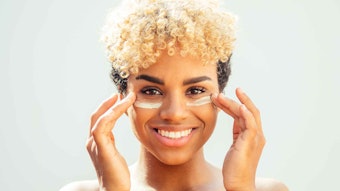Editor’s note: This article is the first in a two-part series describing the anti-aging effects of a natural dipeptide. The first installment presents in vitro studies; the second considers clinical efficacy.
Peter T. Pugliese, MD, refers to elastin as “the youth protein” and boldly states that “there is probably no single protein that has as much to do with a person’s appearance and well-being as the protein elastin.” The skin’s elasticity and firmness are naturally maintained by a complex system of cross-linked proteins that strengthen the skin’s resistance to stretching. The most important protein structure for maintaining this system is the elastic fiber, which is made up mostly of elastin and associated proteins.
Natural or induced facial aging is characterized by ptosis of the skin, which progresses under the effects of 20,000 daily muscle movements, shocks associated with walking and jumping, gravity, fat overload and reduced activity of the supporting and maintenance proteins due to UV and reactive oxygen species (ROS)-induced damage. Such effects cause the network to break down, loosen and ultimately sag along the jaw, eyebrows and lips, imparting the expression of sadness and coarsening the features of the face.
Elastic Fibers
As noted, elastin is an essential component of the extracellular matrix (ECM) or connective tissue of the skin and is responsible for its elastic and viscoelastic mechanical properties. Elastin makes up 1–3% of the dry weight of the dermis1, 2 but is highly resistant to chemical and physical stresses thanks to its high content of hydrophobic amino acids, e.g., Akam Cakm Ile, Pro, Gly, etc., and cross-linking between certain residues of the elastin molecules. This resiliency is exemplified by the billions of extension and recoil cycles elastin undergoes in the aorta without incurring damage.










